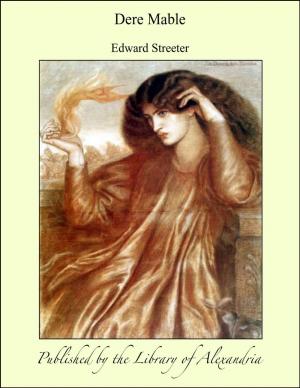| Author: | J. Estlin Carpenter | ISBN: | 9781465588357 |
| Publisher: | Library of Alexandria | Publication: | March 8, 2015 |
| Imprint: | Language: | English |
| Author: | J. Estlin Carpenter |
| ISBN: | 9781465588357 |
| Publisher: | Library of Alexandria |
| Publication: | March 8, 2015 |
| Imprint: | |
| Language: | English |
Over the chancel-arch of the church at South Leigh, a few miles west of Oxford, is a fresco of the Last Judgment and the Resurrection, of the type well known in mediæval art. On the adjoining south wall stands the stately figure of the archangel Michael. In his right hand he holds a pair of scales. In one scale is the figure of a soul in the attitude of prayer; beside it is Our Lady carrying a rosary. The other contains an ox-headed demon blowing a horn. This scale rises steadily, though another demon has climbed to the beam above to weigh it down, and a third from hell's mouth below endeavours to drag it towards the abyss. The same theme recurs in several other English churches; and it is carved over the portals of many French cathedrals, as at Notre Dame in Paris. Unroll a papyrus from an Egyptian tomb of the Eighteenth Dynasty before the days of Moses, and you will see a somewhat similar scene. The just and merciful judge Osiris, "lord of life and king of eternity," sits in the Hall of the two goddesses of Truth. Hither the soul is brought for the ordeal which will determine his future bliss or woe. Before forty-two assessors he declares his innocence of various offences: "I am not a doer of what is wrong; I am not a robber; I am not a slayer of men; I am not a niggard; I am not a teller of lies; I am not a monopoliser of food; I am no extortioner; I am not unchaste; I am not the causer of others' tears...." Then he is led, sometimes supported by the two goddesses of Truth, to the actual trial. Resting on an upright post is the beam of a balance. It is guarded by a dog-headed ape, symbol of Thoth, "lord of the scales." Thoth has various functions in the ancient texts, and even rises into a kind of impersonation of the principle of intelligence in the whole universe. Here as the computer of time and the inventor of numbers he plays the part of secretary to Osiris. In one scale is placed the heart of the deceased, the organ of conscience. In the other is sometimes a square weight, sometimes an ostrich plume, symbol of truth or righteousness. Thoth stands beside the scales, tablet in hand, to record the issue as the soul passes to the great award.
Over the chancel-arch of the church at South Leigh, a few miles west of Oxford, is a fresco of the Last Judgment and the Resurrection, of the type well known in mediæval art. On the adjoining south wall stands the stately figure of the archangel Michael. In his right hand he holds a pair of scales. In one scale is the figure of a soul in the attitude of prayer; beside it is Our Lady carrying a rosary. The other contains an ox-headed demon blowing a horn. This scale rises steadily, though another demon has climbed to the beam above to weigh it down, and a third from hell's mouth below endeavours to drag it towards the abyss. The same theme recurs in several other English churches; and it is carved over the portals of many French cathedrals, as at Notre Dame in Paris. Unroll a papyrus from an Egyptian tomb of the Eighteenth Dynasty before the days of Moses, and you will see a somewhat similar scene. The just and merciful judge Osiris, "lord of life and king of eternity," sits in the Hall of the two goddesses of Truth. Hither the soul is brought for the ordeal which will determine his future bliss or woe. Before forty-two assessors he declares his innocence of various offences: "I am not a doer of what is wrong; I am not a robber; I am not a slayer of men; I am not a niggard; I am not a teller of lies; I am not a monopoliser of food; I am no extortioner; I am not unchaste; I am not the causer of others' tears...." Then he is led, sometimes supported by the two goddesses of Truth, to the actual trial. Resting on an upright post is the beam of a balance. It is guarded by a dog-headed ape, symbol of Thoth, "lord of the scales." Thoth has various functions in the ancient texts, and even rises into a kind of impersonation of the principle of intelligence in the whole universe. Here as the computer of time and the inventor of numbers he plays the part of secretary to Osiris. In one scale is placed the heart of the deceased, the organ of conscience. In the other is sometimes a square weight, sometimes an ostrich plume, symbol of truth or righteousness. Thoth stands beside the scales, tablet in hand, to record the issue as the soul passes to the great award.















